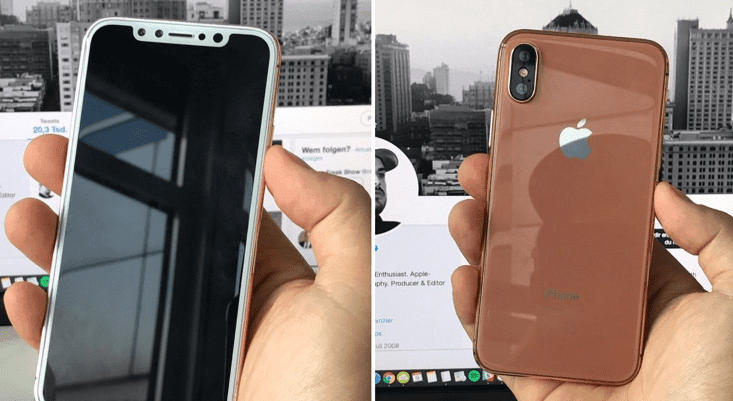The iPhone 8 is expected to feature a radical redesign, with an edge-to-edge display that does away with the top and bottom bezels where features like the Touch ID fingerprint sensor and the front-facing camera are housed. Rumours suggest Touch ID could be eliminated entirely in favour of robust facial recognition technology, which Apple is confirmed to be working on. There will be no physical Home button on the iPhone 8 and no bezels aside from a small area for the front-facing camera.
With an edge-to-edge design, the iPhone 8 may be similar in size to the 4.7-inch iPhone, but with a display the size of the 5.5-inch iPhone. Rumours suggest it will feature a 5.8-inch display with 5.15 inches of usable area, with the rest dedicated to virtual space that will replace the Home button. A series of gestures may be used to navigate instead of a Home button.
The display itself is said to be a flexible plastic OLED rather than an LCD, allowing Apple to introduce a thinner device that consumes less power and offers a better display with higher contrast ratio and more true to life colors. It will feature a slightly curved 2.5D display that's similar to the display used in the iPhone 7.
As for the body, Apple is finally moving away from the aluminum used in the iPhone 5, 5s, 6, 6s, 7, and SE, and will instead adopt a glass body that's similar to the body that was used for the iPhone 4. According to analyst Ming-Chi Kuo, the glass will be built around a polished stainless steel frame that's similar in design to the Apple Watch. Other models will also feature glass, but with an aluminum frame.
"iPhone 8" dummy model image shared by Ben Miller
Like the iPhone 7, the iPhone 8 is expected to be water resistant, but it may have an improved IP68 water resistance rating. It will continue to be able to hold up to rain, splashes, and brief submersion in water, and that water resistance has been confirmed by an Apple supplier and may extend to all iPhone models being released in 2017.
Inside, the iPhone 8 is expected to have a 10-nanometer A11 chip that will be both faster and more efficient, plus rumours suggest it could also include features like induction-based wireless charging and biometric additions like facial recognition that would be used for device security, perhaps to replace Touch ID. In higher-end models with a dual-lens camera, both lenses are expected to feature optical image stabilisation.
iPhone 8 to be release 12th of September

